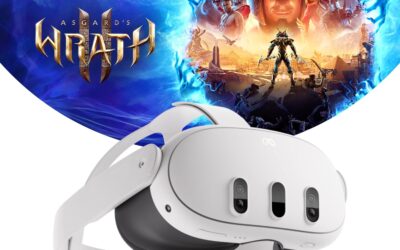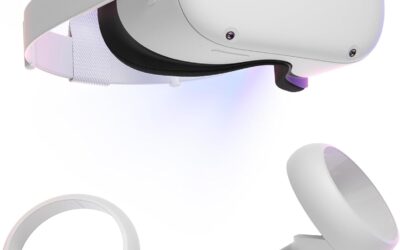Unboxing
The unboxing experience of the Rog Ally is undeniably premium. The packaging is substantial, with the device itself occupying most of the space inside. However, beneath the surface, there’s not much to it—just one side of the power adapter and the other, along with a discreet cardboard stand tucked inside the lid. In contrast, Nintendo takes a different approach, focusing on fun rather than sheer power. Their packaging is vibrant and colorful, evoking a sense of excitement akin to Christmas morning. Plus, the Nintendo Switch OLED model comes with more accessories, giving it a slight edge in this regard.


Audio || Screen
The moment you switch to the ROG, the audio quality immediately stands out, leaving the Switch’s audio in the dust. The difference is stark. While the Switch’s speakers, especially in the new OLED model, are decent, they don’t compare to the ROG’s speakers. The ROG boasts significantly higher volume, approximately 40 decibels louder, and delivers crisp and punchy sound that elevates the gaming experience to a whole new level.
Moving on to the screen, despite the Switch’s 720p resolution, which is starting to feel outdated, the OLED model offers a noticeable improvement over the original LCD version. The OLED panel of the Switch delivers deep contrast, vibrant color saturation, and slimmer borders, giving it a sleeker look. However, the ROG’s screen steals the show with its 1080p resolution, more than twice the pixel count of the Switch, and a remarkable 120Hz refresh rate, a rarity in handheld gaming consoles. Additionally, the ROG achieves around 500 nits of brightness, surpassing the Switch’s 400 nits. Furthermore, the ROG’s display is more color accurate out of the box, offering a more immersive visual experience.
Overall, while the Switch OLED provides a vibrant and enjoyable gaming experience, the ROG’s superior audio quality and stunning display make it a standout choice for handheld gaming enthusiasts.
Accessories
When it comes to accessories, while the ROG offers some interesting accessories, such as the wireless earphones with low latency and active noise cancellation, they’re more tailored for gaming rather than music playback.
A souped-up Xbox controller with customizable RGB lighting and additional buttons, adds to the gaming experience. There’s even an OLED display for loading custom animations, adding a touch of fun to the mix. Additionally, ROG has designed a gaming charger dock that closely mimics the functionality of the Nintendo Switch dock, allowing charging while playing on TV via HDMI.
However, due to the Switch’s widespread adoption and large accessory market, you’ll find a wider variety of accessories specifically tailored for it. From cases and controllers to car holders and cartridge cases, the Switch has a plethora of options, often available at lower prices due to market competition.
While you can find some compatible accessories for the ROG, such as joystick covers designed for the Switch, there’s a difference between using universal items and accessories specifically designed for your device. This aspect highlights the advantage of the Switch’s established ecosystem over the ROG’s niche market.

Portability || Comfort
When it comes to portability, both devices technically qualify as portable, fitting into backpacks or suitcases. However, the ROG turns out to be quite bulky, taking up significantly more space than the Switch. While the Switch’s detachable controllers allow for a compact form factor that can even fit into pockets, the ROG’s size makes it less pocket-friendly.
The slimness of the Switch and its detachable controllers contribute to a slightly flimsy feeling, but it also makes it lightweight and comfortable to hold for extended periods, whether standing or lying down. In contrast, the ROG’s substantial build feels great in the hands, providing a more textured grip. However, its weight can become noticeable over time, leading to a need for surfaces to lean on for support during longer gaming sessions.
Additionally, the button placement on the back of the ROG isn’t as ergonomic, requiring more effort to press and causing discomfort when resting fingers on them. Overall, while the ROG offers a solid grip and premium feel, the Switch’s lighter weight and ergonomic design make it more comfortable for extended use.

Control
The ROG’s controls offer a significant advantage over the Switch’s. While the Switch’s buttons are small and clicky, they can feel sharp and lack precision, especially with the shorter analog sticks. The notorious joy-con drift issue further exacerbates this problem, requiring many users to invest in external controllers for a better experience.
In contrast, the ROG’s controls provide a more comfortable and responsive feel. The shoulder buttons offer better travel and feel like on-off buttons, while all buttons are equally responsive yet softer. The joysticks glide smoothly with a wide range of movements and feature customizable RGB rings for personalization.
However, despite these advantages, the ROG’s controls aren’t entirely without issues. While these may not indicate long-term structural issues, they do pose a slight concern compared to the Switch’s more straightforward controller replacement options.
Overall, while both devices have their strengths and weaknesses in terms of controls, the ROG edges slightly ahead as the preferable option in this regard.
Software
The single most significant distinction between these two devices lies in their software. While the Switch operates on Nintendo’s tightly controlled operating system, the ROG Ally runs on Windows. This distinction manifests in the user experience, with the Switch offering a super polished yet controlled environment, while the ROG provides more flexibility but comes with a less refined interface.
The Switch’s seamless experience is characterized by its effortless gameplay. You simply insert a cartridge, and within seconds, you’re immersed in your game. The entire process is thoughtless and streamlined, allowing you to focus solely on gaming. However, the ROG, being a Windows device, presents a more unrefined experience. Users may encounter fiddly menus and small interfaces that can be challenging to navigate, particularly with oversized fingers.
Moreover, while Nintendo meticulously designs games to suit the Switch’s button layout, PC games often lack the same level of optimization for handheld gaming. Players may encounter issues with button mapping or find that games are optimized for mouse and keyboard rather than controllers. Additionally, Windows’ power management is less efficient for gaming, requiring users to manually close games to preserve battery life—a task the Switch handles seamlessly.
However, the ROG’s Windows platform offers unparalleled flexibility. Users can leverage desktop-class browsing, multimedia capabilities, and even productivity tools. With its fingerprint scanner and USB connectivity, the ROG can transform into a versatile computing device, providing a desktop-like experience when connected to peripherals.
Ultimately, while the Switch excels in providing a dedicated gaming experience, the ROG’s Windows environment offers broader software flexibility, making it suitable for users seeking a multi-functional device beyond gaming.

Gaming
The Nintendo Switch offers exclusive first-party titles like Mario, Super Smash Bros, and Pokemon, which are beloved by many gamers. Additionally, the Switch’s emphasis on local multiplayer and cooperative play is a significant advantage, as many of its games are designed with this in mind, allowing friends to easily join in with detachable Joy-Con controllers.
On the other hand, while the Rog Ally can play a wide range of PC games and even emulate older console titles, it lacks Nintendo’s iconic first-party games and may not provide the same seamless multiplayer experience. PC games often prioritize online play rather than local multiplayer, which may not align with everyone’s gaming preferences.
If you value Nintendo’s exclusive titles and local multiplayer experience, the Switch may be the better choice. However, if you prefer access to a vast library of PC games and the ability to customize your gaming experience, the Rog Ally could be more appealing.
Price

The price gap between the Nintendo Switch OLED and the Rog Ally is significant, with the higher-end model costing roughly $700. However, when considering the full cost of ownership, including game purchases and online subscriptions, the difference in upfront cost may not accurately reflect the overall value.
The Rog Ally’s higher price reflects its premium hardware, which includes a more powerful processor, more RAM, and larger storage capacity compared to the Switch. Additionally, the Ally runs on Windows, allowing for a wider range of software flexibility and compatibility with PC games and emulators.
On the other hand, the Nintendo Switch, while less powerful in terms of hardware specifications, offers exclusive first-party titles, seamless local multiplayer experiences, and a more streamlined gaming experience with its purpose-built operating system.
When it comes to performance, the Rog Ally significantly outperforms the Switch, offering higher resolution, smoother frame rates, and better graphics quality for PC games. However, the Switch’s portability and ease of use make it a more convenient option for on-the-go gaming.
Battery life is another important factor to consider, with the Switch typically lasting longer on a single charge compared to the Ally, which may drain its battery more quickly due to its more powerful hardware and energy-intensive cooling system.
Conclusion
Ultimately, the choice between the Nintendo Switch and the Rog Ally depends on individual preferences and priorities. Gamers who prioritize performance, graphics quality, and software flexibility may prefer the Rog Ally despite its higher price tag, while those who value Nintendo’s exclusive titles, portability, and ease of use may opt for the Nintendo Switch despite its lower performance capabilities.



